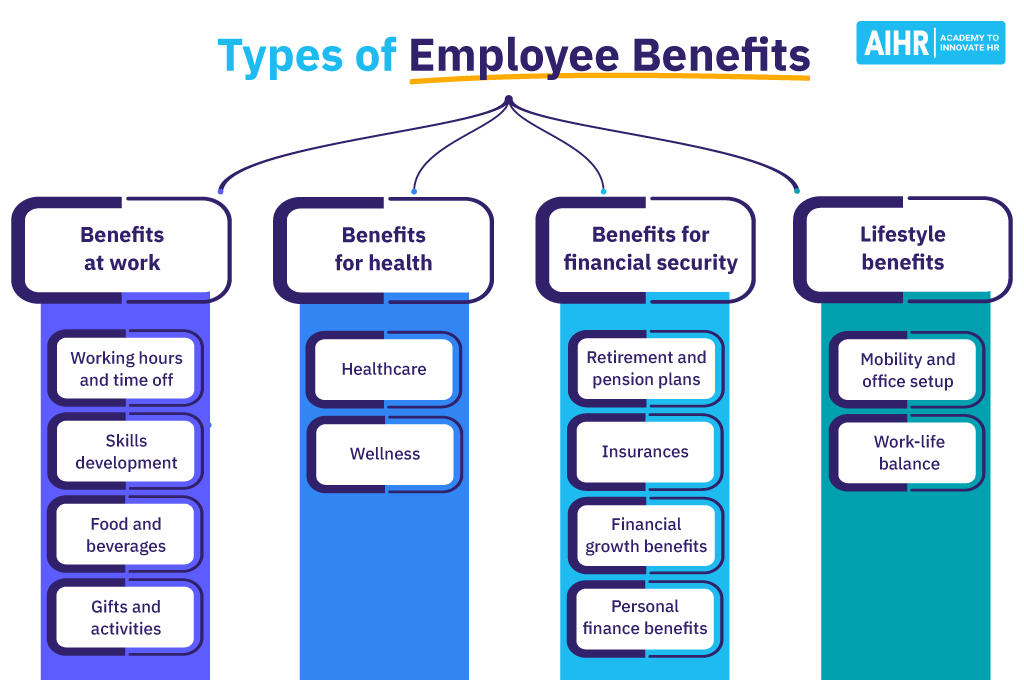Employee Benefits
What are Employee Benefits?
Definition:
“Employee Benefits” refer to the additional perks and advantages that employees receive beyond their regular salary as part of their total compensation package. These benefits are provided by employers to attract, retain, and motivate talent, contributing to overall job satisfaction and well-being. Employee benefits can include health insurance, retirement plans, paid time off, wellness programs, and various other offerings designed to enhance the work-life experience.
Analogy:
Think of employee benefits as the extras in a job offer, similar to the amenities and services provided by a hotel. While the room (salary) is the primary offering, the additional benefits, like spa access, free breakfast, and concierge services, make the overall experience more appealing and enjoyable.
Further Description:
- Health Benefits: This includes medical, dental, and vision insurance coverage. It supports employees in maintaining their well-being and addressing healthcare needs.
- Retirement Plans: Often in the form of 401(k) or pension plans, these benefits help employees save for their future and ensure financial security in retirement.
- Paid Time Off (PTO): This includes vacation days, sick leave, and holidays. Offering PTO allows employees to balance work and personal life, promoting a healthy work-life balance.
- Wellness Programs: Employers may provide gym memberships, wellness challenges, or mental health resources to support employees’ physical and mental well-being.
- Flexible Work Arrangements: Benefits like remote work options, flexible hours, or compressed workweeks cater to diverse needs and preferences, enhancing job satisfaction.
Why are Employee Benefits Important?
- Talent Attraction and Retention: Competitive benefits packages help attract top talent to the organization and retain existing employees, reducing turnover.
- Job Satisfaction: Employees who feel supported and valued through benefits are likely to be more satisfied with their jobs, leading to increased morale and productivity.
- Well-Being: Health and wellness benefits contribute to employees’ overall well-being, reducing stress and promoting a healthier workforce.
Examples and Usage:
- Health Insurance: Providing comprehensive health coverage, including medical, dental, and vision plans.
- Retirement Contributions: Contributing to employees’ retirement savings through a 401(k) plan with employer matching.
- Paid Time Off: Offering a generous PTO policy, allowing employees to take time off for personal or family needs.
- Professional Development: Supporting employees’ growth through tuition reimbursement, training programs, or skill development initiatives.
In summary, employee benefits are an integral part of the total compensation package, offering additional value beyond salary to enhance the overall work experience and support employees’ well-being.
Key Takeaways:
- Employee benefits are additional perks provided by employers beyond regular salary.
- Examples include health insurance, retirement plans, paid time off, wellness programs, and flexible work arrangements.
- Competitive benefits packages help attract and retain top talent while promoting job satisfaction and overall well-being.
Table of Contents





